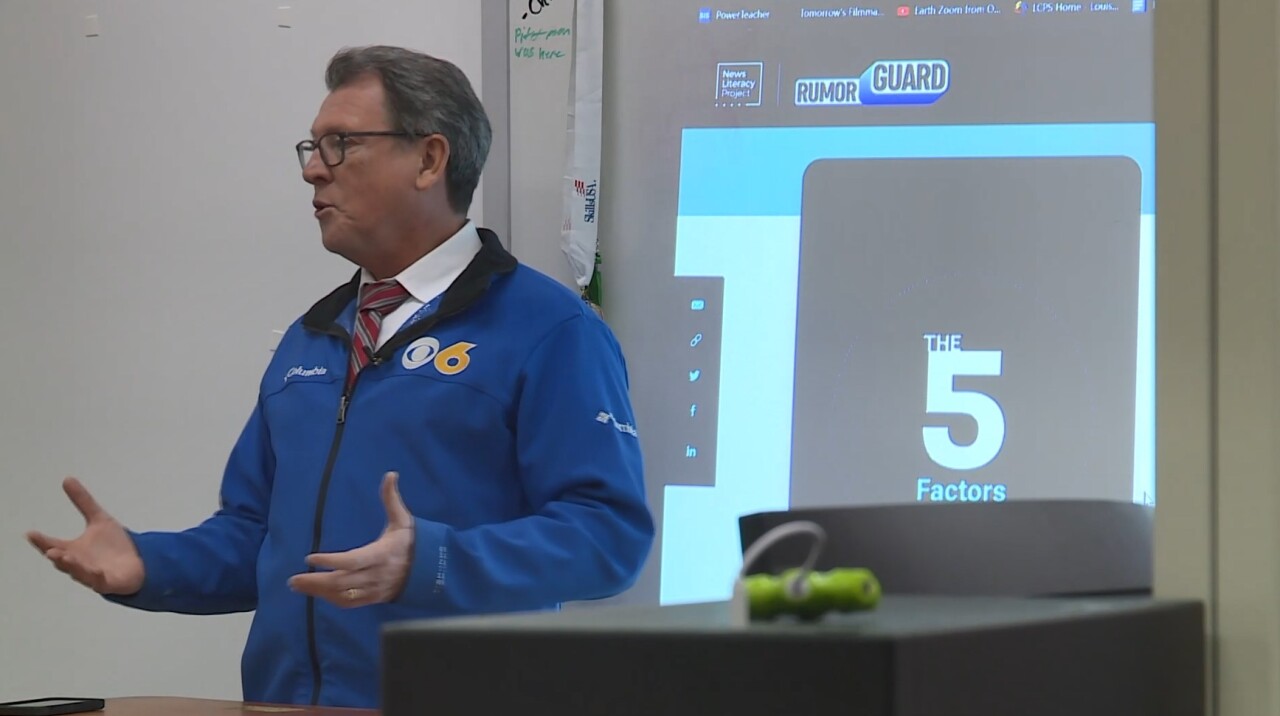LOUISA, Va. — CBS 6’s parent company, E. W. Scripps, has teamed up with the News Literacy Project — a nonpartisan, national education nonprofit that aims to help the next generation of news consumers discern credible information from misinformation in today's media.
As part of News Literacy Week, we talked with TV production and journalism students at Louisa County High School.
They’ve had quite a year already. The school’s new TV Media Production class provided jumbotron graphics, video replays and more at Louisa Lions football games.
"And doing that with first-year students was... it was the hardest time I've had in my career. But it's been amazing!" described TV Media Production instructor, Ken Kilinsky.
Now, they're on to the next project.
"We're going to produce a local program here based on the high school and the area."
Kilinsky wants to make sure his students get it right. Part of that is learning news literacy.
CBS 6 Anchor Rob Cardwell was happy to talk with Kilinsky's class and other journalism students about things like five types of misinformation.
That includes:
- Satire
- False Context
- Imposter Content
- Fabricated Content
- Manipulated Content
TV production student Davis Pruden is listening closely to the lessons. "Even the people that you think that are giving it to you straight, you have to be able to hear both sides of each story."

The school’s newspaper and journalism students are also learning about news literacy.
English teacher Heather Curran is showing them how to sort fact from fiction, and identify the information that they can trust, share and act on.
"They have a plethora of resources, but they don't know how to look at those resources to determine their accuracy, their legitimacy, their validity, their reputability. They need to know how to disseminate information that's coming at them on an immediate and rapid basis in order to have their voices be represented," explained Curran.
Some of the questions the students are taught to ask themselves about a news article include:
- Is it authentic?
- Has it been posted or confirmed by a credible source?
- Is there evidence that proves the claim?
- Is the context accurate?
- Is it based on solid reasoning?
There is still a lot to learn. "What I try to express to the students is that just because the news isn't in your favor, doesn't make it fake," said Kilinsky.
Learning about news literacy… is Building Better Minds.
Watch for Rob Cardwell's education feature stories on CBS 6 News and WTVR.com. If you know someone Rob should profile, email him at rob.cardwell@wtvr.com.
Find unique, award-winning stories every day on CBS 6 News.






